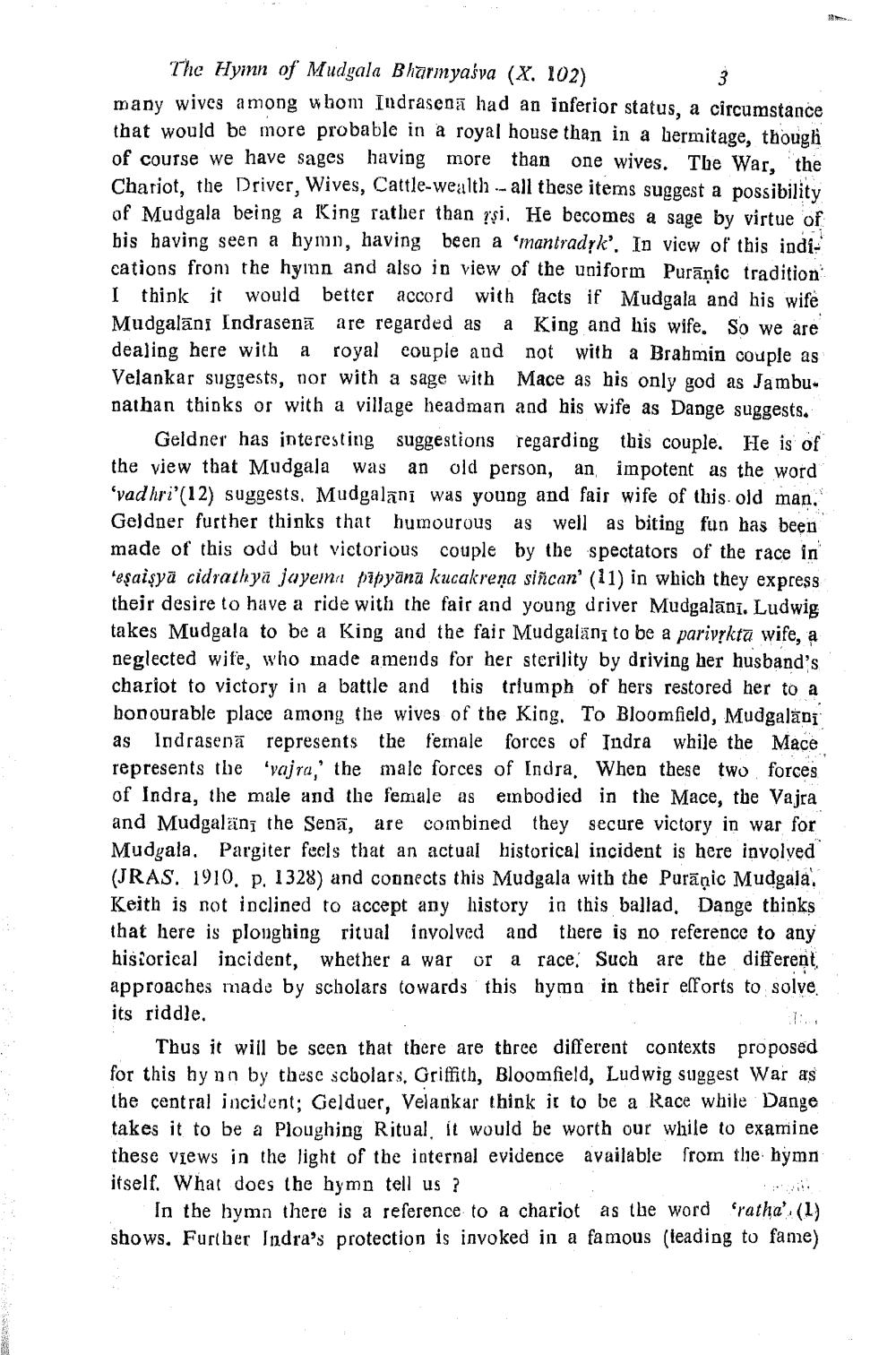________________
The Hymn of Mudgala Bharmyaśva (X. 102) many wives among whom Indrasenā had an inferior status, a circumstance that would be more probable in a royal house than in a bermitage, though of course we have sages having more than one wives. The War, the Chariot, the Driver, Wives, Cattle-wealth all these items suggest a possibility of Mudgala being a King rather than ?şi. He becomes a sage by virtue of bis having seen a hymn, having been a 'mantradyk'. In view of this indications from the hyin and also in view of the uniform Purānic tradition I think it would better accord with facts if Mudgala and his wife Mudgalāni Indrasena are regarded as a King and his wife. So we are dealing here with a royal couple and not with a Brahmin couple as Velankar suggests, nor with a sage with Mace as his only god as Jambunathan thinks or with a village headman and his wife as Dange suggests.
Geldner has interesting suggestions regarding this couple. He is of the view that Mudgala was an old person, an impotent as the word 'vad hri'(12) suggests, Mudgalani was young and fair wife of this old man." Geldner further thinks that humourous as well as biting fun has been made of this odd but victorious couple by the spectators of the race in "eşaişyā cidrathyä jayem, pipyāna kucakreņa siñcan' (11) in which they express their desire to have a ride with the fair and young driver Mudgalānī. Ludwig takes Mudgala to be a King and the fair Mudgalaní to be a parivrktu wife, a neglected wife, who made amends for her sterility by driving her husband's chariot to victory in a battle and this triumph of her's restored her to a honourable place among the wives of the King. To Bloomfield, Mudgalādi as Indrasenā represents the female forces of Indra while the Mace represents the 'vajra,' the male forces of Indra. When these two forces of Indra, the male and the female as embodied in the Mace, the Vajra and Mudgalanī the Senā, are combined they secure victory in war for Mudgala. Pargiter feels that an actual historical incident is here involved (JRAS. 1910. p. 1328) and connects this Mudgala with the Purānic Mudgala, Keith is not inclined to accept any history in this ballad. Dange thinks that here is plonghing ritual involved and there is no reference to any hisiorical incident, whether a war or a race. Such are the different approaches made by scholars towards this hymn in their efforts to solve its riddle.
Thus it will be seen that there are three different contexts proposed for this hynn by these scholars. Griffith, Bloomfield, Ludwig suggest War as the central incident; Gelduer, Velankar think it to be a Race while Dange takes it to be a Ploughing Ritual, it would be worth our while to examine these views in the light of the internal evidence available from the hymn itself. What does the hymn tell us ?
In the hymn there is a reference to a chariot as the word ratha'.(1) shows. Further Indra's protection is invoked in a famous (leading to fame)




